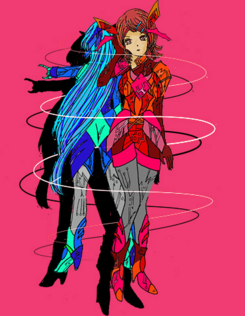
Guest Post: Tan Huynh- EAL Teacher at Saigon South International School Blog | Twitter: @TanELLclassroom
I think of a team as a system of moving parts like gears in a machine. They all work together so that the machine can function. The soft skills are the lubricates used to help keep things moving along smoothly and with less friction. Friction can potentially cause team members to shy away from collaborating, which ultimately impacts students’ growth.
I use the acronym JCAP to encapsulate four essential soft skills of collaboration.
Judgmental language
We are entitled to our opinions and having different opinions. This is healthy to grow and expand the thinking of a team. However, we must be mindful of when our opinions turn into criticism. Teaching is deeply personal, and many teachers attach their identities and self-worth to their profession. When we speak in judgemental ways, we trigger a fight response from others, a defense from some, and an emotionally walling off from others.
I use the CLIMB acronym to avoid highly-charged language. Judgemental language often contains words and phrases such as:
- Change: Let’s change how we …
- Less: A less boring approach is…
- Improve: We can improve this by…
- More: It’s more effective to….
- Better: A better idea is to…
Acknowledge
In addition to avoiding judgemental language, we need to acknowledge our team members at every opportunity. By doing this, we make emotional deposits to our relationships. Think about the health of a relationship like a bank balance. In a relationship, every interaction is a deposit or a withdraw. However, not all interactions are equal in denomination. Positive, affirming interactions have less impact than a negative, critical one. The goal is to have many more positive interactions than the negative ones. Negative interactions can deplete emotional deposits from a relationship much faster than uplifting ones.
Here are some opportunities when we can acknowledge our colleagues:
- Praise a colleague for a meaningful contribution during a meeting
- Acknowledge how the colleague’s strength added to the success of the project
- Recognize when a colleague did something that was in their stretch zone
- Compliment a colleague when they skillfully dealt with an issue
- Describe what you learned from observe their work or interactions with others
- Thank them for supporting you in completing a task
There are countless ways we can recognize our colleagues. We just have to train our eyes to see and our hearts to share when these opportunities arise. Teachers are encouraged to have a laser focus on the positive qualities of their peers rather than be blinded by the differences.
Personalizing issues
Sometimes our negative interactions and judgmental language can cause us to take things personally. We need to be mindful of the moments when we are taking things personally. Attaching to an idea or personalizing a topic closes doors of opportunities to take the curriculum in a different direction or to expand our practice.
Your passion for a particular topic or process will motivate and engage your students. The downside is that when suggestions are offered to our pet projects, we can become defensive. As we fight to defend our passions, we might inadvertently build barriers to collaboration because our colleague’s ideas are met with resistance at best and hostility at worst.
Signs of taking things personally can include phrases such as:
- That is the way we’ve always done it! (TTWWADI)
- Why do we have to change it?
- What’s so bad about what we have?
- You just don’t see the value in this.
If we do not develop these soft skills, we will have a hard time collaborating effectively with others. Every team has a culture, and these soft skills nourish the soul of the team to have positive, affirming, and effective collaboration.




